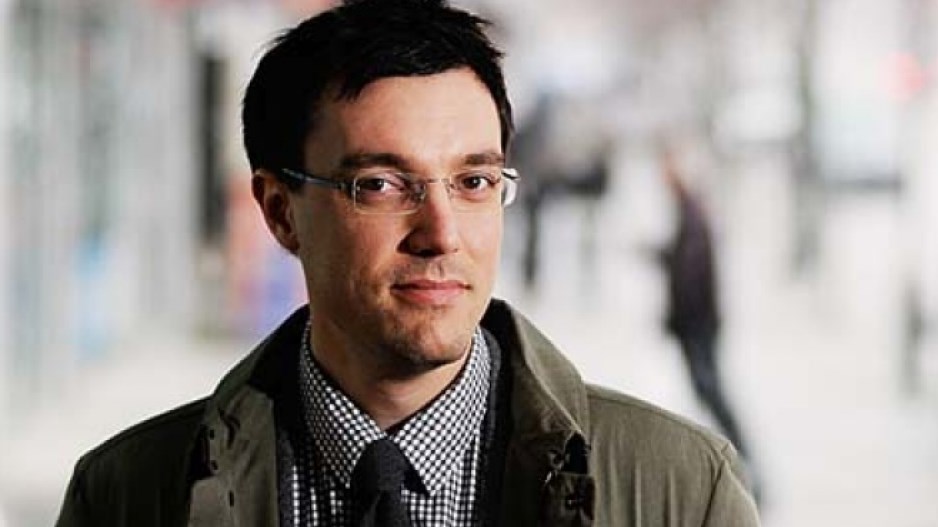Despite compounding affordability issues for the working class, the recent rampant speculation in Metro Vancouver’s real estate market has provided a silver lining for those marginalized by the legal system.
That’s because lawyers’ pooled trust account balances have experienced record highs, and a recent bump in interest rates has resulted in record profits for the Law Foundation of British Columbia, which derives its income from trust account interest.
The foundation received just over $52 million in 2018, according to its annual report released earlier this year. That beats the previous record of $50.9 million in 2007. But while the Bank of Canada base rate averaged 4.5 % in 2007, it averaged only 1.4 % in 2018.
The foundation is a non-profit organization that provides grants to community groups for legal education, legal aid, law libraries, legal research and law reform. Those assisted via the foundation are typically low-income and marginalized people. And the general public benefits as well with improved access to justice.
Funding was established in 1969 by the W.A.C Bennett government via legislation that forced banks to pay interest to the government on pooled trust accounts, which hold cash for real estate transactions, settlement proceeds and retainers. Processing the interest per client was too onerous and would amount to little money, as money typically comes and goes within days or weeks. But the cumulative amount was enough to provide a public benefit.
“The more people in business conducting transactions through lawyers, the more money that’s held in trust by lawyers,” said Josh Paterson, executive director of the foundation since January. “It’s that interest from those funds that provides money to the foundation.”
The foundation suffered immensely after interest rates – and real estate transactions – took a dive after the 2008 recession. In 2009 and 2010, with base rates between 0.25% and 0.5%, the foundation only took in $6.2 million and $7 million, respectively.
The base rate steadied at 1.0% from 2011 to 2014, as did the foundation’s revenue ($16.6 million in 2014). But in 2015, the foundation reported record-high trust balances as real estate sales and prices soared, and in 2016, when the base rate was slashed in half to 0.5%, the foundation actually earned more money ($17.4 million) compared with recent years.
Paterson said it’s not explicitly known where the interest income comes from, but he surmises it is mostly from real estate.
“Real estate probably plays a role,” he said.
“Regular garden variety exchanges play a role as well.”
In 2016, the foundation’s then-chair, Warren Milman, stated in his annual report concerns over income because of “the likely negative effect on trust balances of the new provincial property purchase tax and the new mortgage rules.”
According to the 2016 annual report, “The record high level of trust balances before these changes is unlikely to continue.”
However, trust balances up to 2018 still appear plump and, according to the 2018 report, “competitive agreements” with 23 banks and credit unions have helped.
Given the nature of the foundation’s income and the past decade of fluctuations, the foundation tries to maintain a grant stabilization fund (a buffer fund) equivalent to 2.5 years of funding. Last year’s windfall allowed it to increase grants from $18.2 million in 2017 to $32.3 million in 2018 while increasing the stabilization fund from $41 million to $58.7 million. The biggest winner was a one-time $5 million grant for construction of the Indigenous Legal Lodge at University of Victoria. An additional $6 million was made available for new spending in 2019. In 2018, the foundation gave 218 grants to various community groups and legal programs.
The new funding comes at a time when the provincial government is adding to government-funded legal aid programs. Attorney General David Eby recently flowed $2 million through the foundation – which made arm’s-length funding decisions for the government – for eight new legal clinics.
Paterson said poverty and family law programs need more permanent government funding.
“I think we’re in a real deficit for access to justice in this province. Even with the services we are able to provide, we cant do enough. We’re always trying to do more. Fundamentally the justice system is difficult to navigate if they don’t have the resources to do it,” said Paterson.
The establishment of the new legal clinics was among 25 recommendations in lawyer Jamie Maclaren’s review of legal aid released earlier this year.
“My report recommends the development of community legal clinics providing family law and poverty law services, specialty clinics, indigenous justice centres, an experimental criminal law office and a major case team of lawyers and paralegals specializing in long and complex criminal cases,” Maclaren said.
Maclaren also called for greater overall funding for legal programs such as legal aid.
“Legal aid is not broken in B.C. It has simply lost its way,” Maclaren stated. “Years of underfunding and shifting political priorities have taken their toll on the range and quality of legal aid services, and especially on the people who need them.”




